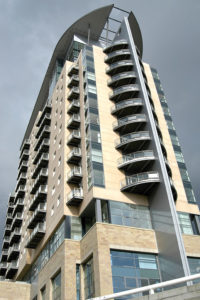 When it comes to investment in the education sector, it is student housing that has grabbed the most attention.
When it comes to investment in the education sector, it is student housing that has grabbed the most attention.
Last year was a record year for investment in the purpose-built student accommodation sector, with more than £5bn of deals completed, up from whatin comparison looks like a measly £1.4bn in 2014.
More than 74,000 beds across more than 170 assets were traded during 2015. Institutions were the most active players, snapping up 62 of the assets sold. Canadian pension fund CPPIB was the biggest spender of the year, investing £1.4bn on the Liberty Living platform and Student Castle portfolio.
UK student digs are particularly attractive to global investors, which are now seeking long-term secured income. According to Savills, some £6.3bn has been invested into the UK student housing sector over the past three years. US buyers led the way, ploughing £4.3bn into the sector. Already in 2016 that country has invested more than £500m into UK student property. Asia is hot on its heels, investing more than £400m, with domestic players coming in third with more than £300m spent on student housing so far this year.
And although 2016 does not look set to be another record breaker in terms of transaction numbers, the sector is still expected to attract around £4bn of investment.
So why is student accommodation so attractive?
Student housing outperformed the traditional sectors in 2015, delivering total returns of 21.5%, just outperforming offices (20.5%) and industrial (19.7%) and massively outperforming retail, which delivered returns of just 9.5%.
The strong performance was driven by rental growth of 3.65%, with a number of towns and cities around the country delivering double the national average.
Rental growth for student accommodation outpaced the more traditional property sectors of offices, retail and industrial in a number of cities. In Glasgow, student rents increased by 7.1% in 2015, compared with a 1% growth in industrial rents; in Liverpool, student rent increased by 4.3%, compared with a 2.5% increase in retail rents; student rents in Sheffield increased by 4.5%, dwarfing the 0.7% increase in office rents; and in Southampton the 8.1% increase in student accommodation rents was almost three times that in the retail sector.
However, in each of those cities large development pipelines (combined they are set to add 4,600 beds to the pipeline this September) are likely to push rents back down to the national level, if not lower.
And Brexit looks set to have a minimal effect on the student community.
EU students presently have fee parity with UK students (£9,000 in England, fee-free in Scotland and Wales), while non-EU students can pay between £12,000 and £36,000 a year in fees. With fees in EU countries generally being €2,000 (£1,700) pa or less, there are some fears that UK universities could lose their appeal to EU students.
However, although there are more than 125,000 EU students studying at higher education levels in the UK, they represent only 5% of the total UK student community and contribute just £800m to universities’ annual fees income of £10.5bn.
So, while rental growth may be slightly muted in 2016 and yields will remain static at around 4% for prime London accommodation, 4.5% for prime regional assets and 5% for secondary regional student digs, it is consistent returns that investors will be looking for as the economy weakens, and student housing offers just that.

Key deals
Asset: 561-bed Victoria Point, Manchester
Vendor: MCR Property Group
Purchaser: Empiric
Price: £29.5m
Reason for purchase: in line with investment criteria and returns profile. Opportunity to upgrade accommodation and enhance rents
Asset: 1,100-bed McLaren development portfolio
Vendor: McLaren
Purchaser: Hines
Price: £150m
Reason for purchase: debut sector buy for Hines, which aims to deploy £500m into the UK sector over the next three years and expand into mainland Europe this year
Advisers: Tudor Toone for McLaren; Savills for Hines
Asset: 5,500-bed Project Ardent portfolio
Vendor: IMF
Purchaser: Mapletree Investments
Price: £417m
Yield: 6.1%
Reason for purchase: UK sector debut. Buying mass
Advisers: Knight Frank for IMF
Asset: Emperor House & Roman Wall House, EC3
Vendor: London & Regional
Purchaser: Urbanest
Price: £40m
Reason for purchase: portfolio expansion
Advisers: Savills for L&R
Asset: 770-bed Godiva Place, Coventry
Vendor: Regents Godiva
Purchasers: Aviva Investors Realm Commercial Assets Fund
Price: £74m
Reason for purchase: long-term RPI-linked income
Advisers: Colliers International for Aviva
• To send feedback, email samantha.mcclary@estatesgazette.com or tweet @samanthamcclary or @estatesgazette










